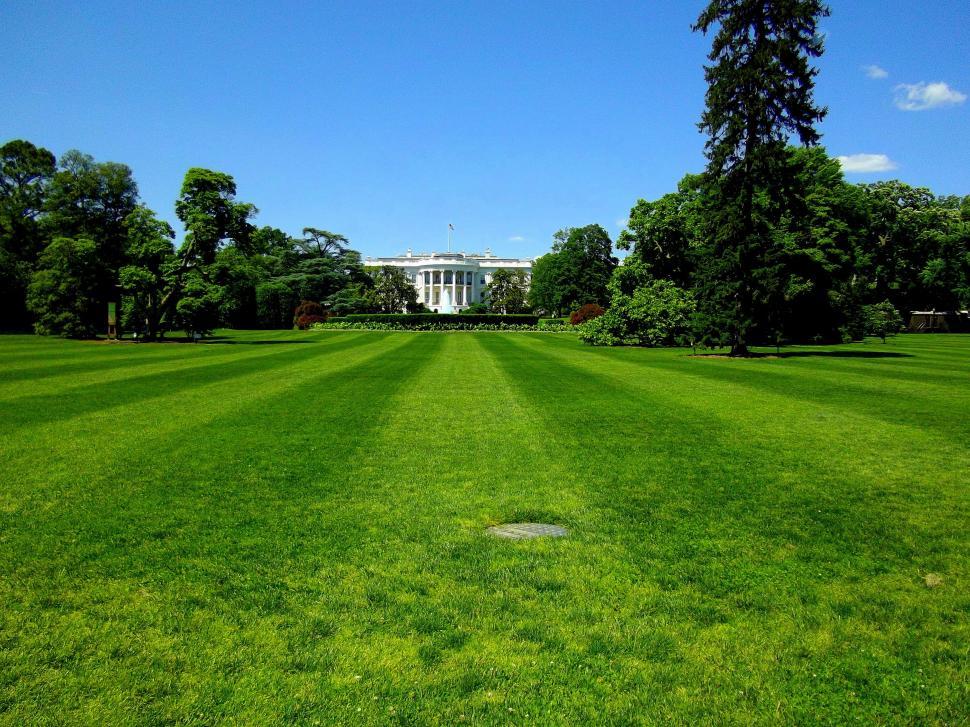by Sara Budish
When the physical setups of our offices constantly remind us to be wary of one another, what will happen to our choices about how to handle conflicts at work?
One of the stranger aspects of the ongoing pandemic is the surreal, almost mystical quality that formerly-ordinary activities have taken on. I would put the daily life of a typical office employee in this category. The mundane details of an office worker’s day—packing shoulder-to-shoulder in elevators up to shared workspaces, standing around snack areas in the morning and chatting with one another in the hallway between meetings, sitting down with a dozen co-workers in a small conference room—now take on a hazy, “did-we-really-do-that?” kind of novelty. And yet, offices around the country are beginning to recapture and reimagine how to use their space effectively and safely.
In order to keep employees healthy and reassured, guidance suggests a range of potential changes to how physical spaces are organized. The very ability to make choices about how to organize space and schedules is a luxury that employees in many types of work—such as in grocery stores or pharmacies or factory assembly lines—do not and cannot have. For those workers, questions of safety and well-being are arguably even more urgent. For those who do think of a group office as their workplace, it’s worth considering how Covid-era changes to the space might impact employees’ behavior at work—including the ways in which they might handle conflict with one another.
“Workplace conflict” may conjure up images of snippy exchanges in meetings, but I use the term here broadly. Conflict, in an extreme form, can look dramatic, but in workdays filled with highs and lows, all kinds of disagreements and moments of tension contribute to the textured landscape of how we experience our everyday lives with colleagues. Conflicts might be substantive, such as a creative or process disagreement about a project. They might be related to differences in approach or behavior, such as the way a sensitive issue is discussed with a client or customer. Perhaps you received—or gave—unclear or insufficient instructions for a task. Perhaps someone offered up your idea in a meeting without acknowledging your contribution. Or perhaps you went to the copier only to discover that someone had left a paper jam. (At least that last one isn’t an issue in a world of remote work.) And we all make choices—conscious or unconscious—about how to handle these conflicts, even if our decision is to do nothing except stew in our own cubicles.
So what might it be like to “be back in the office” over the next weeks and months? The experience of other countries, along with predictions from designers and architects, provides a glimpse of what the future of the work space could look like. First and foremost, many employees may continue working from home, meaning that office buildings could be “de-densified” to begin with. For those who are in the office, there will likely be new systems and norms: plastic partitions may separate work areas and cafeteria seats. Hallway routes may be changed to allow only one-way traffic. Desks may be bare and devoid of personal items such as family photos, and surrounded on the floor by colored carpets to create visual boundaries for purposes of social distancing. The office kitchen may no longer be a hub of chatter or catching up. The air might be permanently imbued with the smell of Lysol. Everyone might be wearing masks.
We know from other contexts that the organization of physical space has an impact on how we resolve disputes. In the design of courthouses, the buildings themselves changed as adversarial trials became more important both in the American legal system and in public legal imagination. In addition, courtrooms themselves were designed to physically reflect the importance of due process. Recently, architect Deanna Van Buren has been reimagining what spaces could look like if they were built to facilitate restorative justice for harms done, rather than imprisonment of the perpetrators under a punitive model: features include circles of chairs in quiet areas, cooling-off spaces, and blackboards for recording and brainstorming that echo the one-text process.
And these are physical spaces that are specifically designed to handle conflicts. This is a completely different organizing principle than the typical office building, which until the pandemic may have been built for efficiency, productivity, collaboration between employees, or cost savings. Now, the guiding purpose of office design is to control the spread of infectious disease. The typical office, rightfully, has not and will not take as its intention the effective management of conflict between colleagues. But the impact on conflict management will be no less present, even if it is collateral.
So what might this impact be? One clue may lie in the way interactions between co-workers will change. One of the biggest changes brought by the work-from-home regime, of course, is the lack of spontaneous interactions with colleagues in the same physical space. Within one’s own house or apartment, there is no group walk to grab a mid-morning coffee from the shop down the street. The only person you might see in the bathroom nowadays is one of your small children (or maybe that’s just me). Without being in the same space as colleagues, it is harder to veer from pre-planned meeting times when people have confirmed that they will be available—especially because at least some employees are doubling as caregivers to children or other relatives. When every conversation has to be scheduled, communication and, by extension, office culture more broadly may start to feel more formal and orchestrated, rather than spontaneous and organic.
Might it be easier than before to avoid uncomfortable or challenging situations in this kind of post-Covid office? It might. Without the inevitable run-ins with colleagues, issues that probably should be addressed could easily be kicked down the road. In the post-Covid workplace, it may be easier for us all to “hide in our offices.” Having to set up a conversation about an issue, rather than popping into someone’s office or hanging back after a meeting, may pose a psychological barrier that makes it more likely that we will put off addressing an uncomfortable issue. There is a definite risk that conflicts that should be named and managed are instead left to fester and grow.
But perhaps it is not so much that conflict avoidance will increase, but that different opportunities for conflict management could surface and become more appealing, while others might fade into the background or disappear. Having a private, discreet conversation with a colleague about a disagreement might actually be easier and more effective when that conversation could happen in a truly one-on-one way, without other colleagues nearby to observe or overhear. Particularly in high-conflict workplaces in which combativeness is the norm, typing out an email or even a Slack message could have the impact of slowing down our defaults and providing us with an opportunity to think twice about how we react when something goes awry. Some increased space—literal and figurative—could act like Deanna Van Buren’s “cooling-off spaces” and defuse moments of tension that would otherwise escalate. In addition, having to pre-schedule challenging conversations could in fact provide precious time to prepare, substantively or emotionally—something that isn’t available if a colleague or boss stops by your office unexpectedly, or pounces in the cafeteria line.
Beyond the question of how conflict management might change, there is a deeper conundrum here. Informal channels for interaction not only represent opportunities to address or smooth over conflicts and disagreements, but also—and perhaps more importantly—they contribute to the overall building of relationships that can defuse or deescalate conflict in the first place. Indeed, many conflicts are managed not through a single conversation that “clears the air,” but rather in the course of a set of formal and informal interactions that, yes, address the substance of the disagreement, but also build the strength of overall relationships between people. We are more forgiving to others when we know them better, and not having our colleagues in our “neighborhoods” will surely have some impact on our interactions more broadly. Can the new office cultures build and maintain these ties between people that act as bridges when the going gets tough? When the “data” we have about each other as colleagues grows thinner due to physical distancing, will our relationships be strong enough to hold us together through moments of conflict?
Effective communication, and effective conflict management in particular, seems like an uphill battle when our spaces are set up specifically to limit our proximity to one another and, putting it bluntly, to never let us forget that other humans could pose a grave risk to our health. No doubt the coming weeks and months will see a great deal of inventiveness as teams try to replicate their former office culture under the new regimen, and we will likely see ingenious solutions to the challenges posed by physical distancing at work. It will no doubt take time for us all to get accustomed to “the new normal” of office environments once office life resumes in full.

 Sara is a Lecturer on Law at Harvard Law School and Assistant Director and Clinical Instructor in the Harvard Negotiation and Mediation Clinical Program (HNMCP). In addition to supervising student teams on client projects, she is a member of the teaching team for the Negotiation Workshop and other courses on conflict management theory and practice, and facilitates executive education courses offered by the Harvard Negotiation Institute. She previously served as Clinical Fellow at HNMCP, during which she supervised student groups including the Harvard Negotiation Law Review, helped develop curricula on facilitation and multiparty negotiation, and worked on other special projects in HNMCP such as a negotiation-themed podcast. Through her teaching and consulting work, Sara has led projects and programs for Atrius Health, the Asia Foundation, the Edward M. Kennedy Institute for the U.S. Senate, Harvard Medical School, the New Hampshire Adult Drug Court, the Public International Law & Policy Group, among others. Prior to joining HNMCP, Sara served as a Research Associate in the Negotiation, Organizations & Markets Unit at Harvard Business School. Her writing has been published by the Journal of Dispute Resolution, WBUR’s “Cognoscenti” blog, Harvard Business School Publishing, and Harvard Law School Case Studies. She is also on the board of the New England Association for Conflict Resolution. During law school, she served as a mediator in small claims court and Advanced Training Director for the Harvard Mediation Program, and as a student in HNMCP she designed and delivered a series of customized trainings for a group of medical providers focused on difficult conversations. She earned her J.D. from Harvard Law School, and her A.B. from Dartmouth College
Sara is a Lecturer on Law at Harvard Law School and Assistant Director and Clinical Instructor in the Harvard Negotiation and Mediation Clinical Program (HNMCP). In addition to supervising student teams on client projects, she is a member of the teaching team for the Negotiation Workshop and other courses on conflict management theory and practice, and facilitates executive education courses offered by the Harvard Negotiation Institute. She previously served as Clinical Fellow at HNMCP, during which she supervised student groups including the Harvard Negotiation Law Review, helped develop curricula on facilitation and multiparty negotiation, and worked on other special projects in HNMCP such as a negotiation-themed podcast. Through her teaching and consulting work, Sara has led projects and programs for Atrius Health, the Asia Foundation, the Edward M. Kennedy Institute for the U.S. Senate, Harvard Medical School, the New Hampshire Adult Drug Court, the Public International Law & Policy Group, among others. Prior to joining HNMCP, Sara served as a Research Associate in the Negotiation, Organizations & Markets Unit at Harvard Business School. Her writing has been published by the Journal of Dispute Resolution, WBUR’s “Cognoscenti” blog, Harvard Business School Publishing, and Harvard Law School Case Studies. She is also on the board of the New England Association for Conflict Resolution. During law school, she served as a mediator in small claims court and Advanced Training Director for the Harvard Mediation Program, and as a student in HNMCP she designed and delivered a series of customized trainings for a group of medical providers focused on difficult conversations. She earned her J.D. from Harvard Law School, and her A.B. from Dartmouth College






